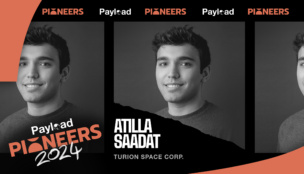A bad Internet connection can lead to frustration. For Nihar Agrawal, it led to a career.
Agrawal often struggled to video chat with their grandparents, whose poor signal in India would repeatedly drop the calls. Those difficulties sparked Agrawal’s interest in computer engineering, and they vowed to spend their career bringing accessible and affordable digital connectivity to billions of underserved people around the world.
Now, the 25-year-old designs software that helps ensure communications reach their intended destination regardless of location, weather, or other interference for satellite-networking startup Aalyria.
“I’m living my dream,” they said. “I’m able to contribute in a small way…to that goal that I set for myself when I was 16.”
How it works: Agrawal’s prized project is Spacetime, a software platform that directs communications through a network of terrestrial and space-based links based on which path is the most efficient. If a storm or a jammed satellite slows the flow of data on one path, Spacetime automatically reroutes that information. Aalyria has likened the technology to the navigation app Waze for its ability to redirect traffic in real time.
“It’s making it possible to establish high-bandwidth, low-latency connections in even the most challenging environments, from remote regions to contested battlefields,” Aalyria CTO Brian Barritt said in his nomination of Agrawal. “This has profound implications for industries ranging from telecommunications to disaster response to national security.”
Progress ahead: Agrawal is excited about the potential opportunities that could come with more collaboration. If a single network provider lacks the capacity to pass along a large message — like images distributed from an operations center — Agrawal suggested that multiple providers could split the load to ensure the data quickly reaches its destination.
“I think we’re seeing a big trend towards interoperability,” they said. “I feel like I have a really unique privilege to have a front row seat to designing what will hopefully facilitate a lot more innovation and interoperability throughout the industry.”




